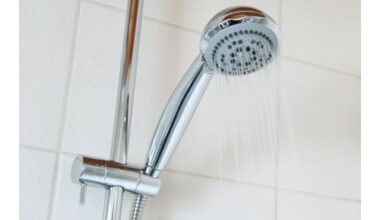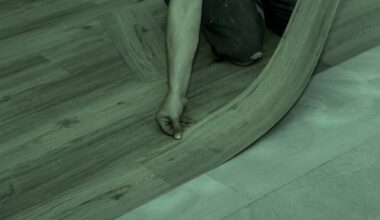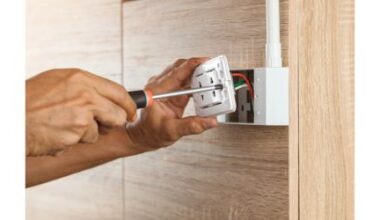A yard with lumps and bumps is not only ugly, but it could also be dangerous because people could trip, fall, or sprain their ankles. Many events can cause an uneven yard, including drainage issues, leaks in pipes beneath the surface, and lawn pests like grubs or moles disturbing the root structure of the turf, but none of them need to completely derail your landscaping efforts. In this post, we’ll look at how to level a yard by hand using pavers, grass, and a pool without damaging the finish. Let’s get this party started.
The Importance of Yard Leveling
You likely already know how important it is to maintain the aesthetic appeal of your landscape if you’re looking for information on how to level a yard for a pool, grass, and pavers by hand. Your outdoor landscape will be more stable with a level yard. It also allows you to avoid serious damage and costly foundation repairs.
To allow rainwater to slowly drain from your foundation, your lawn must gradually slope away from your house. If rainwater runs toward your house, it will pool around the foundation walls. Moisture will accumulate as a result of this. Your foundation is being weakened. It might even get worse. Water seeps through foundation walls and floods your basement.
If your home does not have a basement or is built on a slab, moisture can seep into the wooden floor joists. The joists will rot due to the water. Endangering the structural integrity of your home
But the issues don’t stop there. Poor leveling will also harm your gardens, trees, and landscaping. as well as potential problems with standing water. a mosquito breeding ground, which are not only pests but also disease carriers.
When to Level a Yard
When water runs into the street or puddles, when it looks unsightly, or when you have difficulty stepping over bumps and dipping, you should consider leveling your backyard or front yard. Also, when to level a yard by hand for a pool, grass, and pavers depends on the underlying cause of the lumps and low spots. Before the “club season” for the kids, you might want to level the area and even make a hardscape path if, for example, the grass has become compacted in some places because of daily trips to the treehouse.
How to Level a Yard for a Pool
After choosing a location, make sure the ground is level. “Leveling the yard for a pool is one of the trickiest things to do, in my experience,” Dan Bailey, president of WikiLawn, a lawn and garden resource, tells. Before installing a pool, level the yard as follows:
Step 1: Find your location and clear away any large rocks or debris.
Select the area of the yard that is the flattest and is not near any large trees, receptacles, power lines, sewage lines, or cables. Make sure the soil is firmly packed and strong enough to support the above-ground pool of your choice. Then, using a rake, remove any large debris or rocks that could damage the pool. Then, remove the grass and other vegetation in the area with a shovel, tarp, or sod cutter. Remove debris from the worksite using a wheelbarrow.
Step 2: Layout 2x4s and a level on the ground.
Place 2×4 planks from the center of the pool site to the outer edge, using as many planks as necessary to reach the border. On top of each 2×4, place a level. You can use the levels as a guide to determine which areas of the site are not level. Before you begin digging, mark these locations with stakes.
Never try to judge the yard’s level by sight. Even an inch or two off could have serious consequences for the above-ground pool. Stakes and twine can also be used to level the ground, with the level placed on top of the string. Place one stake in the center of the site and one on the outer edge, then tie twine between the stakes.
Step 3: Level the ground by adding or removing soil.
It’s time to use a shovel to level the ground after determining where it’s uneven. This part is tedious because the soil must be removed or added one scoop at a time. Find the deepest spot on the site first. This is the depth at which the rest of the ground must be leveled.
It is not recommended to add a lot of soil to lowered areas because the above-ground pool will flatten the earth and possibly create an uneven surface. Digging the pool area at least two inches into the ground is a good idea if the site is going to be topped off with sand.
Step 4: Repeat the process until the entire area is flat.
Continue to remove soil until the entire area is level. Rather than adding new dirt to the lower-level areas, it is more effective to remove dirt from the raised areas. To ensure that all areas of the pool site are level, continue to move the 2x4s. If the area is circular, use a 2×4 to rotate it 360 degrees from the center to the outside edge. Even if the level remains constant throughout the rotation, the ground must still be taken into consideration.
Step 5: Tamp the ground and rake any remaining rocks or debris.
Once the ground is leveled, use the rake or lawn roller to remove any rocks or debris that surfaced during the leveling process. After the area has been cleared of debris, moisten the soil with a hose. Low-pressure watering will take about an hour to complete this task. Also, use a hand tamper or a rolling tamper to compact the surface after it has been moistened.
After compacting, the area can be completely smoothed out with sand. However, before attempting this step, it is crucial to refer to the above-ground pool’s instructions.
Step 6: Get in touch with a landscaping or pool expert.
It’s time to learn how to install the above-ground pool after the ground has been leveled. To properly install the pool, follow the manufacturer’s instructions or contact a pool professional. They can inspect the ground to ensure that it won’t interfere with the pool liner. To keep growth at a minimum around the pool, contact a landscaping company to spray the area with herbicides or fungicides. If the area for the pool is still uneven, a professional can assess any damage and work to level the yard for the pool.
Related: HOW TO LEVEL GROUND FOR PAVERS: Detailed Guide
How to Level a Yard by Hand
Fortunately, this does not have to be the case! If your yard has bumps, low spots, or divots, you can easily level it by hand without the use of expensive equipment. You can easily remediate your yard so that it looks even and pristine with a few simple tools and a little elbow grease. To begin, dethatch your grass to remove any debris or dead growth that may be causing it to look lumpy. The term “ecosystem” refers to a group of people who work in the construction industry. Now, get to work!
Step 1
Place stakes in the ground at each corner of the cultivated area. Tie one end of the string to the top of a stake, then tightly wrap it around the stake’s top two or three times. Pull the string to the next stake and wrap it around the top in the same manner as before. Continue until you reach the first stake again, and then wrap the string around the top.
Step 2
Remove the soil. Start at one corner of your plot and place the shovel about halfway into the soil. Pull it up and flip the soil over. Break up any large clumps of soil with the tip of the shovel. Repeat this process until the plot has been turned over.
Step 3
Remove Grass from the area. Use chopping motions with the hoe to further break up the soil. Move high mounds of soil to lower areas as you go, roughly leveling the ground. Break up any clumps larger than a golf ball.
Step 4
To further level the yard, rake it by hand. Spread the soil evenly across the plot by moving the rake forward and backward over the land. Break up any remaining clumps with the rake’s teeth. Particularly uneven areas can be leveled using the rake’s back.
How to Level a Yard for Pavers
If you’ve ever tripped on an uneven paving surface, you understand how critical it is to level the ground for pavers. Nonetheless, this type of foundation work requires a significant amount of time and, when done correctly, is barely noticeable.
Don’t be fooled; this is no reason to dismiss it. Use this section to learn how to level the yard for pavers, and let the lack of complaints about tripping hazards in your patio or walkway be your main reward.
- Push stakes 5 to 8 inches into the ground where you will have the boundaries of a path or other project, placing the stakes around where each paver will rest.
- Tie a string between the stakes at ground level. The string will indicate the top of the pavers.
- Dig 6 inches into the ground along the path where the pavers will rest.
- Place a carpenter’s level on the ground where you dug and use it to determine whether or not the area is level. Remove the carpenter’s level and move the soil to create a more level base if the location is not level. Continue checking the spot for levelness and moving soil until the location is level.
- If you intend to create a path of continuous pavers, lay landscape fabric over the ground. If you want to install individual pavers with grass growing between them, skip this step.
- Take out the stakes. Pin the landscape fabric to the paths or other projects with bent-board edging.
- Spread a 2-inch layer of gravel over the ground. The gravel will allow the water to drain.
- Cover the gravel with a 2-inch layer of sand. Use a hose sprayer to lightly dampen the sand. Smooth the damp sand with a rake.
- Flatten the sand with a hand tamper. With the carpenter’s level, check the top of the sand for level, and move sand as necessary until the top of the sand is level. The prepared area can then be covered with pavers.
What should I use to level my yard?
Lawn roller, rake, and shovel: Use the shovel to dig into low spots and expose the dirt beneath the grass. Use a rake or lawn roller to level the lawn after filling the divots with the topdressing mix. If the uneven areas are large enough, use a tiller to dig them up.
Can I level my backyard myself?
It depends. It is recommended that you hire a professional to grade the yard if the drop is greater than that of the slope upward.
How do you flatten an uneven yard?
Smooth out high spots and depressions with a rake and shovel. Dig out your sod and store it somewhere shady until it’s time to replant it. To make a topdressing mixture, combine equal parts of topsoil, compost, and sand. Fill in any dips in your lawn with topdressing until it is level.
How do you fix a sloping yard?
Retaining walls can be used to create flat spaces.
You can create a flat area in your backyard by carving out part of the slope and adding a retaining wall to hold back the soil. These can be used to create planting areas, seating areas, or family recreation areas.
What is the fastest way to level a yard?
How to Level a Yard in Seven Steps
- Cut your lawn.
- Dethatch your lawn, if necessary.
- Remove the grass from the lawn’s sunken area.
- Combine topsoil, sand, and compost to create a soil mixture.
- Use the soil mixture to fill in sunken areas and holes.
- Level the entire lawn.
- Water the lawn.
What is the cheapest way to level a lawn?
Fill with dirt. If your land has only a few low spots, adding some fill dirt is a quick and easy fix. Use a lawn-leveling mix from your local garden center or a 1:1 mixture of sand and garden soil. Load the filled dirt mixture into a wheelbarrow and shovel a 1/2-inch layer into the depressions.
How do you level the ground without digging?
There is an easy way to accomplish this. Two 2-by-4 boards should be nailed together so that they are one or two feet longer than your pool’s diameter. Next, lay the attached boards on the ground where the pool will be and put a level on top. Lift and lower the 2-by-4s slowly until they appear level.
Can you put soil on top of grass to level?
In most cases, a lawn can withstand the addition of a soil layer that is only 1/4 to 1/2 inch thick. You can use a drop-spreader to evenly and accurately spread topsoil over the lawn, or you can simply fling it with a shovel.
Can you level a yard with a roller?
Yes. Lawn rollers look like miniature steamrollers that you push or pull across the ground. They’re typically used to help level the soil and improve the overall appearance of your lawn, as well as speed up the establishment of newly seeded lawns.
Conclusion
It is a worthwhile and relatively simple project to tackle in the spring once you know how to level a yard by hand for a pool, grass, and pavers. Yard leveling can restore the fun and curb appeal of your lawn while also preventing water waste and water damage to the house.
Determine the cause first, and then follow the steps outlined above to address lawn lumps and low spots. Fix the slope if you see water running toward your home’s foundation. Your yard should be easier to maintain once you’ve leveled it.






